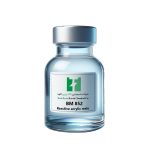BM852
May 19, 2024Hydroxyl acrylic resins
May 5, 2024
Two-component adhesives
Two-component adhesives are 100% solid systems that consist of two main components (resin) and hardener and are packaged separately. The exact amount of each component must be used to achieve the proper mechanical properties and adhesion and the necessary drying time. The two components must be mixed together during use and hardening occurs at ambient temperature. The viscosity of the mixture gradually increases after applying it on the surface and the reaction between the two components is complete. After hardening, the glue becomes hard and flexible and its thermal and chemical resistance increases. In cases where a small amount of glue is needed, glue can be applied by hand. However, the exact amount of both components should be mixed together and the time of mixing the two components should be accurate. However, in this case, the amount of glue loss will be high.
Two-component adhesives are divided into four main groups:
Epoxy adhesives
Acrylic systems + benzoyl peroxide
Silicone adhesives
Urethane adhesives
Soft heat adhesives
These adhesives are produced in solvents, and their common types include poly chloro pyrenes, polyurethanes, acrylics, and synthetic and natural rubbers. Solvent-based adhesives contain a significant amount of solvents. These adhesives can be applied by brush, roller and spray. Solvent-based adhesives differ in drying and sticking times. All types of adhesives have good flexibility with proper bond formation and significant heat resistance. Due to the presence of organic solvents, these adhesives are less sensitive to surface pollution.



